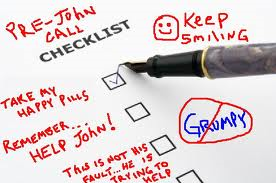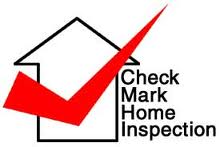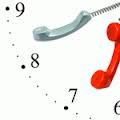[Test Category] Test Subject
Submitted by mattplu on Fri, 04/10/2015 - 00:50You were sent a group email from http://opendoormultiservices.com/.
Test Message
Increasing Your Call Quality
Submitted by lmitchell on Fri, 08/29/2014 - 14:51 Research your company’s products and services. This makes it easier to assist customers, because most inquiries you would receive are related to the use of your product or service. Practice using your opening statement. This wording would consist of a standard greeting such as “Thank you for calling Open Door MultiServices. This is Sheila speaking. How may I assist you today?”
Research your company’s products and services. This makes it easier to assist customers, because most inquiries you would receive are related to the use of your product or service. Practice using your opening statement. This wording would consist of a standard greeting such as “Thank you for calling Open Door MultiServices. This is Sheila speaking. How may I assist you today?”
Ask questions that help you identify your customer’s needs. If your customer expresses overall dissatisfaction with your company, get specifics. Once you know precisely what the issue is, you can turn a negative into a positive by using the tools available to you (e.g. refund, rebate, escalate the call, or send out new product). Use “please” and “thank you” regularly. This can go a long way in helping your customer feel appreciated.
Gather all pieces of information needed to help your customer and proceed through your system smoothly. In order to proceed through certain call center computer call agents are often required to enter vital information such as the type of product a customer is using, the account holder’s name and the account number. Use your customer’s name. When you refer to each customer by name throughout the call–along with the preferred salutation (e.g. Mr., Mrs., Dr. or Miss) — it personalizes the encounter and is a sign of respect.
Avoid saying, “Sir/Madam, I am only trying to assist you” or interrupting abruptly while a customer is venting. This may give off the appearance that you are annoyed with your customer rather than truly concerned about her. Instead, reassure the customer that you understand her concerns and that you are sorry for any inconvenience this issue has caused. Offer additional assistance. Once you have helped resolve the issue your customer initially called about, ask if there is anything else you can assist with. This will help you tackle any outstanding issues prior to ending the call. Or, if the first solution you offered was unsatisfactory to your customer, provide an appropriate alternative. Use your closing statement.
This wording would consist of a standard closing such as “Thank you for calling Open Door MultiServices. We are open 10 a.m. to 5 p.m. EST, Monday through Friday for your convenience. Have a great evening.” Document the call. Although many calls are recorded, it helps to document each call under the customer’s individual account. We are here to assist you http://connectpro40965093.adobeconnect.com/lexsine
Also, please feel free to visit our partner blog (8atHome) here
Receiving Low Quality Assurance Scores?
Submitted by lmitchell on Fri, 08/29/2014 - 14:29 When you are receiving low Quality Assurance (QA) scores the best thing to do is to begin servicing with a checklist.
When you are receiving low Quality Assurance (QA) scores the best thing to do is to begin servicing with a checklist.
- Take the Quality Assurance Form and create a checklist
- Check each area as you proceed through the call
- Your Average Handling Time may suffer a tad bit for the first two or three times of getting use to the check list. However, it should come back to normal as soon as you become efficient so the sooner the better
We are here to assist you – http://connectpro40965093.adobeconnect.com/lexsine
Home Inspection Instructions for Independent Contractors
Submitted by lmitchell on Fri, 08/29/2014 - 14:21 Before hiring an independent contractor to work from home, a company may want to perform an in home audit for their own protection as well as for the protection of the prospective agent.
Before hiring an independent contractor to work from home, a company may want to perform an in home audit for their own protection as well as for the protection of the prospective agent.
Some of the reasons a company may want to perform an in home audit include the opportunity to get to meet the prospective worker in person, verify that they have a work space that is set aside from the remainder of their home, and that the space is in compliance with labor laws. Companies need to ensure the person they are hiring is real and trustworthy. A home visit can often help identify potential fraud situations, security concerns or potential labor law violations that cannot be verified on a form or over the telephone.
Another type of in home audit is on the increase for individuals working from home and that is an IRS audit. These audits are designed to ensure the individual’s home office meets the compliance requirements for “regular and exclusive” use if the individual has taken an itemized deduction for that office space.
The following actions will help you prepare for either type of in home audit.
- The most important step is to make certain your office space is as separate as possible from the rest of your home. A separate room is best but you could use a large closet or a part of a room for your office as long as it is clearly not being used for any other purpose than business. It is best to have a door to the room that can be closed. This provides a visual separation.
- Make certain the office space is clean and uncluttered.
- The room must be well ventilated and heated to a comfortable temperature that is suitable for working.
- Chairs and desks must comply with the correct height and ergonomic positioning for a work station to prevent repetitive motion injuries and back problems.
- The office space should be well lit and lighting should meet labor standards for a safe working environment to prevent eye strain and vision injuries.
- Clear the office space of any hazardous materials like paint, asbestos, flammable materials or liquids.
- Ensure that all electrical appliances, machinery and wiring is safely stored away from water and heat sources. Wiring should be properly anchored along walls. No loose wiring can be run over floors with walking access or on working surfaces.
- All office equipment should be used for work only. That includes copiers, computers, printers, phones, fax machines. Any personal use can disqualify the office from meeting the “regular and exclusive” use test.
- Make certain all bills, receipts, paperwork related to the business are in good order.
- Verify your status as an independent contractor. Read and re-read the IRS guidelines for job classification.
- Do not keep personal items in the office-especially things like TV’s unless you can prove it is used in the work you do.
- Make sure you have ID available for the auditor. A driver’s license, government issued passport or picture ID.
- Have several months of utility bills available for review.
- Check that the auditor who visits has ID. They should also be able to provide the name of the person or organization that sent them, and a person to contact if you are uncomfortable with the auditor’s credentials.
- Make sure you are present during the audit so you can answer any questions the auditor may have. It is a good opportunity to sell yourself, and prove your character if the auditor is from a potential employer.
Setting up your office correctly from the beginning will provide a professional appearance, lend credibility to the work you do and help you to optimize the tax advantages of your office space. Showing you care about compliance shows a potential employer you are committed and most likely trustworthy. The IRS website and the department of Labor both have additional information about employee classification, and the “Regular and exclusive” use test to help ensure you are in compliance with all rule and regulations applicable to work at home professionals.
Ways To Reduce Your AHT
Submitted by lmitchell on Fri, 08/29/2014 - 14:11 Here are some suggestions on how to reduce your talktime:
Here are some suggestions on how to reduce your talktime:
- Focus on product knowledge and customer service or sales skills. The more you know about your products and how to position them the shorter span of time you get to finish the call
- Focus on multi-tasking. Know how to pull-up all your resources in order to address customer’s concern in the shortest span of time
- Reduce the chatter with the customer while remaining friendly and take control of the call (the more you speak the less the customer will speak because they are focused on what you’re doing and saying)
- Listen to the customer w/o interrupting and take notes (prevent them from having to repeat themselves)
- Confirm an understanding by repeating it to the customer and moving forward
- Speak through the process this will help in preventing dead air and idle chatter (ex. We’re removing one line and upgrading the other line to …)
- Confirm what you’ve done and seek agreement from the customer
- Ask is there anything that you may help them with, thank them for calling and move to the next call (the call should’ve already been documented and no need for ACW)
- Very important that you document accounts while on the call instead of going into ACW – this will reduce your AHT greatly
- Reduce the # of questions you need get help with by making note of the answer that was previously given
- Attend the weekly meetings
- If you’re unable to attend the weekly huddles watch the recordings that are sent
- Set achievable goals
- If you focus this week on reducing your talk time by 1 minute, hold time by 1 minute and reduce you after call work by another minute then you have slashed 3 minutes off you AHT
- Schedule a weekly meeting with your PF and follow up with me if you feel it necessary so that we can track your progress
We are here to assist you – http://connectpro40965093.adobeconnect.com/lexsine




